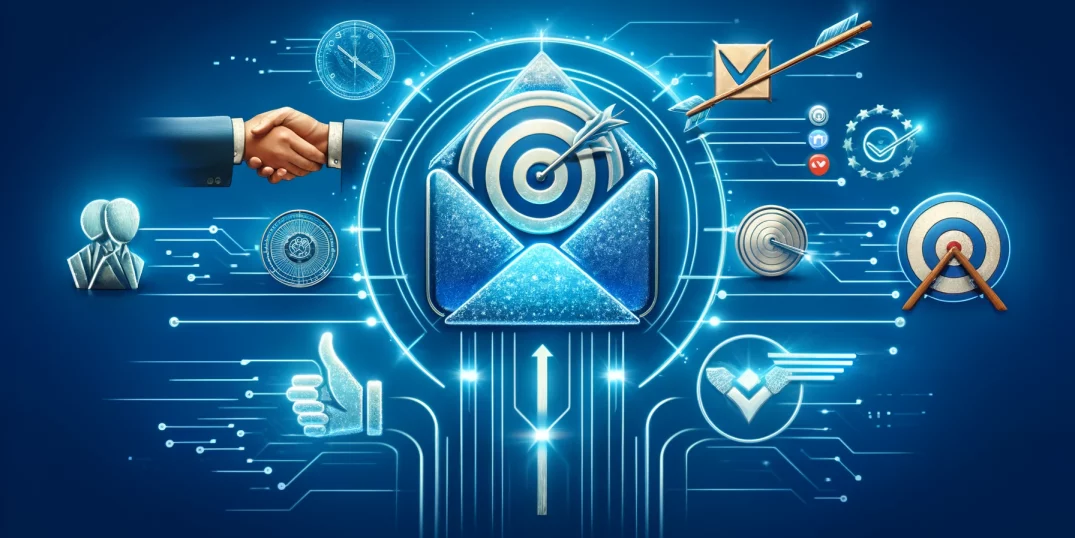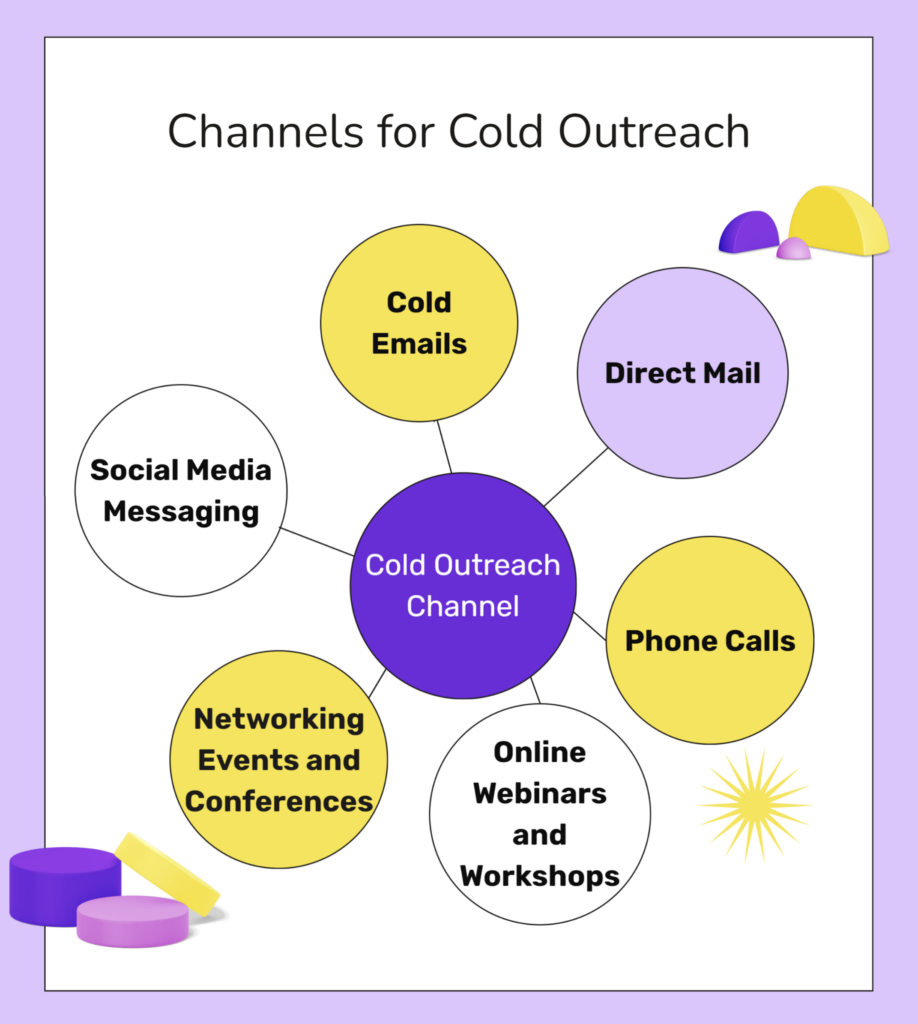- Home
- Fundamentals of Email Marketing
- Cold Outreach Success: Best Pr ...

Cold outreach is the process of reaching out to individuals or organizations without having a prior relationship with them. The purpose of the outreach is to offer a product, service, or partnership.
You are reaching out to start a conversation, which, hopefully, would lead to a business opportunity, collaboration, or sale. This can be done through email, social media, phone calls, direct mail, or in-person meetings.
Cold Outreach vs. Cold Emailing
Cold outreach is a key business strategy to make new contacts and find opportunities. Unlike typical marketing, it is about contacting people or companies you’ve never interacted with before. You can do this via phone calls, social media, direct mail, or in-person meetings.
Cold emailing is a specific subset of cold outreach that uses email to reach out to potential leads or partners. Marketers like cold emailing because it is scalable, cost-effective, and easy to personalize. A well written cold email can capture the essence of what you have to offer and why it matters to the reader.
Features:
- Scalability: Emails can be sent to a lot of people at once. It can also be done quickly and cost-effectively.
- Customization and automation: Witn the right tools, emails allow personalization at scale. You can even set up automatic follow-ups based on recipient actions.
- Measurable: Engagement metrics (open rates, click-through rates) provide insights into campaign effectiveness, allowing for data-driven optimizations.
Despite its effectiveness, cold emailing is not without its pitfalls. So, marketers are advised to exercise caution to not come across as spammy or overly salesy.
Channels for Cold Outreach

Besides cold emailing mentioned above, there are more cold outreach channels to try out:
Phone calls
Features:
- Immediate interaction: Phone calls are real-time engagement. They give you instant feedback and the ability to address questions or objections on the spot.
- Personal touch: The human voice conveys emotion and sincerity — this is a powerful tool for building rapport and trust with potential leads.
- Highly targeted: Calls can be directed towards specific individuals within an organization, ensuring your message reaches the intended audience.
- Best for high-value B2B sales or services where personalized interaction can significantly influence the decision-making processes. Phone calls are most effective when you do some preliminary research that allows you to personalize the conversation.
Social media messaging
Features:
- Platform variety: Each social media platform (be it LinkedIn, Twitter, or Instagram) caters to different audiences. You also get to communicate in different styles: from professional networking to casual engagement.
- Direct and personal: Messaging allows for direct contact. This means you can personalize communication based on what the user’s profile tells you.
- Content rich: Beyond text, messages can include images, links, and videos, enhancing the ability to convey complex messages engagingly.
- Best for reaching out to new contacts in industries where social presence is strong, such as creative fields, tech, and entrepreneurship. It’s particularly effective for engaging younger demographics or when promoting products or services that benefit from visual presentation.
Direct mail
Features:
- Tangible impact: Physical mail really stands out in a time when everything is digital. It can be a memorable touchpoint.
- Personalization potential: Direct mail can be highly customized: you can send out handwritten notes or even tailored packages that directly address what your readers are looking for.
- Versatility: Direct mail is suitable for all sorts of purposes. It can introduce new interesting products, send invites to events, share detailed information bundles – and lots more.
- Best for high-level outreach efforts. Consider using it when reaching out to executives or decision-makers – basically, people who are less accessible via digital channels. Direct mail is also a good choice in industries where it’s best to tangibly showcase physical products or detailed proposals.
Networking events and conferences
Features:
- Face-to-face engagement: In-person interactions help build stronger connections and make nuanced communication possible.
- Immediate feedback: Conversations happen in real time and you can change their course based on the new data and feedback you receive.
- Community building: Events bring together like-minded individuals and potential clients, offering networking opportunities beyond the initial outreach.
- Best for industries where personal relationships drive business decisions, such as real estate, consulting, or high-end B2B services. Networking events are also beneficial for startups seeking investors or businesses looking to establish their presence in a specific community.
Online webinars or workshops
Features:
- Educational value: Provides a platform to demonstrate expertise, educate potential leads, and offer valuable insights related to your industry or service.
- Lead generation: Attendees are often required to register, providing contact information and indicating interest in your offering.
- Interactive elements: Q&A sessions, polls, and discussions enhance engagement and allow for direct interaction with the audience.
- Best for businesses that offer knowledge-based services or products. This includes software companies, educational institutions, and consulting firms. They work well for nurturing leads and establishing authority in your field.
Best Practices for Cold Outreach
Timing and frequency
- When to reach out: Research suggests that emails sent on Tuesday, Wednesday, or Thursday have higher open rates. You should aim for mid-morning or early afternoon: this is when recipients are more likely to check their inbox. Check out the in-depth research on the best time to send marketing emails: The Best Time to Send Marketing Emails: Insights for Higher Conversion in 2024
- How often to follow up: Persistence is key, but it’s important to not be overwhelming. A good rule of thumb is to follow up 2-3 times if you don’t receive a response, spacing your communications about a week apart.
Following up
- Personalize your follow-ups: Tailor each follow-up message to reference previous communications and add new value or insights to catch the recipient’s interest.
- Keep it concise and respectful: Acknowledge the recipient’s busy schedule and express your understanding if they choose not to respond. This can help maintain a positive relationship for future interactions.
Learn more: Cold Email Follow-Up: Never Ignore the Chance to Turn Silence into Opportunity
A/B testing
- Experiment with your approach: Test different subject lines, email lengths, and calls to action to see what works best for your audience.
- Analyze and adapt: Use the data from your tests to refine your strategy. Pay attention to metrics like open rates, response rates, and conversion rates to guide your adjustments.
Compliance and ethics
- Know the rules: Familiarize yourself with regulations like GDPR in Europe or CAN-SPAM in the United States, which dictate how you can legally conduct email outreach.
- Practice transparency and respect: Always provide a clear way for recipients to opt out of future communications. Your message should bring genuine value and respect your readers’ time and privacy.
Common Mistakes to Avoid in Cold Outreach
Spammy practices
- Avoid overuse of sales language: Some phrases sound too promotional. And if they do, they can trigger spam filters or deter recipients. Focus on offering solutions, not just selling.
- Be mindful of frequency: Bombarding recipients with too many messages too quickly can lead to negative perceptions or even legal trouble.
Lack of personalization
- Generic doesn’t work: Sending the same message to everyone is ineffective. Use the recipient’s name, reference their company, or mention a recent accomplishment to make your message stand out.
- Tailor your value proposition: Ensure that what you’re offering is relevant to the recipient’s needs or interests.
Ignoring feedback
- Listen to responses: Whether positive or negative, feedback is invaluable. It can provide insights into how your outreach is perceived and where you can improve.
- Adjust accordingly: If you notice patterns in the feedback, such as certain points of confusion or interest, adapt your future messages to address these areas more effectively.
To Sum Up
Successful cold outreach delivers value. It leverages various channels like email, social media, phone calls, and direct mail. Do your best to avoiding spammy practices, and continuously refine your approach based on feedback and data.



